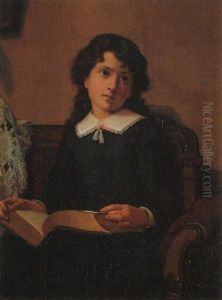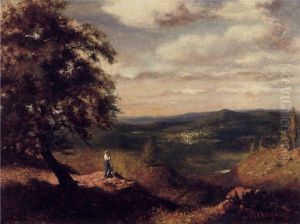Lemuel Everett Wilmarth Paintings
Lemuel Everett Wilmarth was an influential American painter and educator, born in Attleboro, Massachusetts, in 1835. His journey into the art world began under the guidance of the famed Hudson River School artist, William Morris Hunt, in Boston. This foundational experience set the course for Wilmarth's lifelong dedication to art, leading him to further his studies in Paris at the prestigious École des Beaux-Arts under the tutelage of Jean-Léon Gérôme, a leading figure of the French academic art scene.
Wilmarth's style was significantly shaped by his time in Europe, where he absorbed the classical and academic principles of painting, which he later integrated with his own American sensibilities. Upon his return to the United States, Wilmarth became a pivotal figure in the American art education scene. He was appointed as the first head of the School of Art at the National Academy of Design in New York City, a position he held for over two decades starting in 1870. His leadership and teaching at the National Academy played a crucial role in shaping the careers of the next generation of American artists.
Throughout his career, Wilmarth's work exhibited a keen interest in light and shadow, often focusing on still life, portraits, and landscapes. His paintings are noted for their meticulous detail, precision, and a quiet, reflective quality. Despite his adherence to academic traditions, Wilmarth's work subtly incorporated elements of realism and naturalism, marking him as a bridge between classical and emerging artistic movements of his time.
Wilmarth was not only a prominent artist but also a key figure in the art community, actively involved in the American Watercolor Society and the National Academy of Design. His contributions to American art were not confined to his paintings; his legacy is profoundly felt in his impact on art education and his influence on a generation of artists who would go on to define the American art scene in the late 19th and early 20th centuries.
Lemuel Everett Wilmarth passed away in 1918, leaving behind a body of work that reflects his commitment to academic art and education. Today, his paintings are held in several prestigious collections, serving as a testament to his skill and dedication to the arts. Wilmarth's life and work exemplify the transition in American art from European academic influences to the development of a distinct American artistic identity.






















